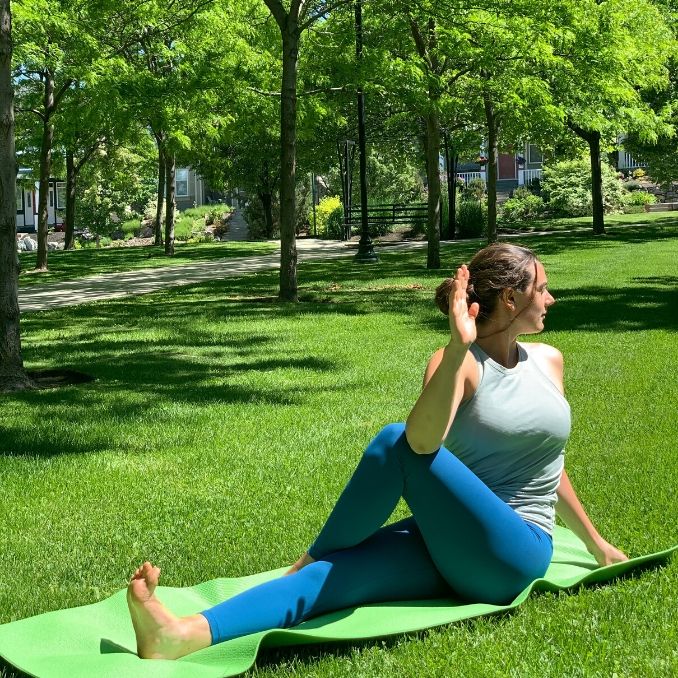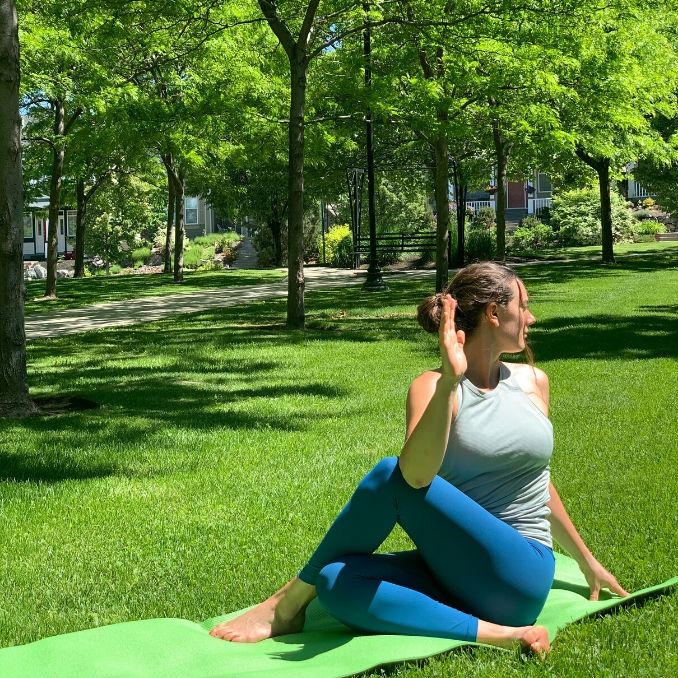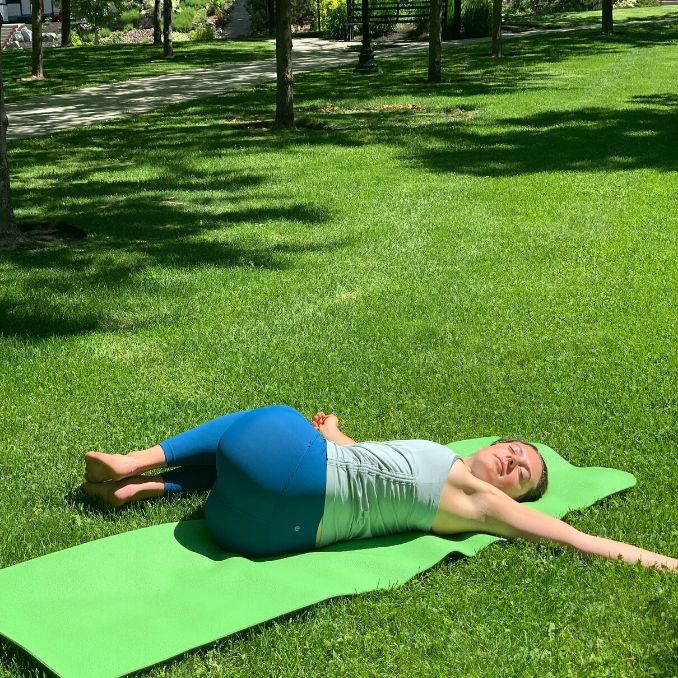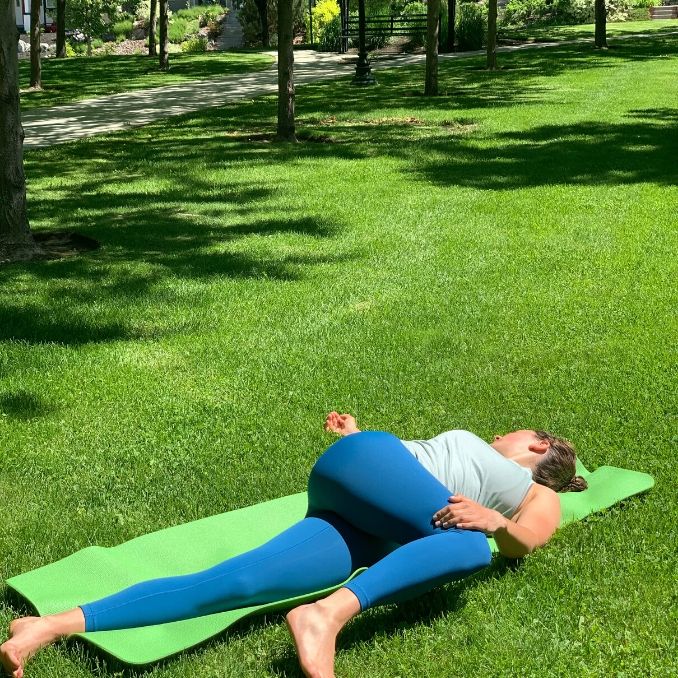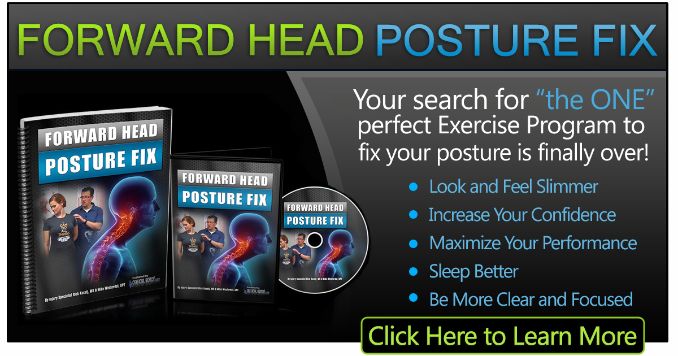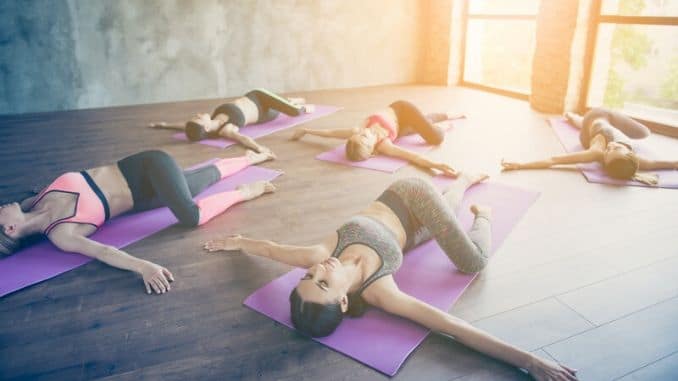
If you have ever been to a yoga class or done a yoga class online, you have probably done a spinal twist. There are many variations of spinal twists, and they all confer great health benefits. Twists rotate the spine and open up the muscles in your back. Twisting regularly ensures that we keep our intervertebral joints mobile and healthy. The soft tissue around your spine can also become stiff, causing pain and injury. Twists can help prevent this to keep us feeling our best. When we twist, we generally try to lengthen our spines, which helps create space between and decompresses the vertebrae. We engage our core when doing active twists, which means twists can be great abdominal strengthening exercises. As if this isn’t enough, twists can also aid in digestion by helping the motility and mobility of food through the digestive tract.
As always with yoga, let your breath and your body be your guide. If any pose does not feel right in your body or constricts your breathing, ease-out, and try a modification.
1. Seated Spinal Twist (Ardha Matsyendrasana)
This spinal twist involves full body activation and is especially strengthening for the core. You will likely do this twist many times if you practice yoga, so make sure you learn the basics of doing this pose safely and effectively.
Begin seated with both legs lengthened out in front of your body. Bend your right knee and plant your right foot as close to your seat as is comfortable. You can leave your foot here, or cross it over your left leg and plant it on the outside of your left knee/thigh. Try to keep your entire foot pressing into the mat. Keep your left foot-activated by flexing your toes back towards your shin. Your left arm can wrap around your right leg, or you can bring your left elbow to the outside of your right knee (as pictured). Your right arm will come behind you to act as a kickstand, helping you stay long through the spine. On an inhale, sit tall, using your core to lengthen your upper body, as if a string was pulling you toward the sky from the crown of your head. As you exhale, use your core to twist to your right, twisting from the base of your spine first, with your neck turning last. There is no need to look all the way behind you. As you continue to breathe in the posture, use each inhale to further lengthen your spine, and each exhale to move a little bit deeper into the twist. You may come out of the posture slightly with each inhale, and move back in on the exhales. Repeat this pose on the left side.
Hold this position for 5 to 10 breaths on each side.
Modifications: If you find it difficult to sit tall with your legs in front of your body, there are a couple of modifications for you to try. First, you can try the seated spinal twist variation detailed next in this article. Second, you can try placing a block or other support under your seat to create more space for your back body (pillow, folded blanket, etc.).
2. Seated Spinal Twist Variation (Ardha Matsyendrasana)
This twist is a variation of Ardha Matsyendrasana (the first twist in this list). This version will stretch the hips and may be more comfortable for some people.
Begin seated and follow the same steps as outlined in the previous pose. This time, instead of keeping your left leg straight, bend your left knee and bring your left foot toward your right hip. Again, you can wrap your left arm around your right knee if that is more comfortable (and may give you a nice hip stretch). Repeat on the left side.
Hold this position for 5 to 10 breaths on each side.
Modifications: If you find one hip comes up off the floor, support yourself by placing a block or other support under your seat.
3. Two Knee Spinal Twist (Jathara Parivartanasana)
This version of a supine spinal twist gives you the option of a more active or restorative posture. By actively pulling your knees toward your chest, you will work on strengthening your core, or you can relax the core for a gentler option.
Begin by lying on your back with your arms out at your sides. Use your core to draw your knees toward your chest and slowly drop your knees over to the right. If your knees do not reach the ground or if it feels too intense, place a support under or between your knees. Your gaze can come to the left if that feels comfortable in your neck. For a more active variation, pull your knees up toward your chest as you twist. You can even hold and hover your knees above the ground. Repeat on the left side.
Hold this position for 10 breaths on each side.
Modifications: For a gentler twist, begin with your feet mat-width apart before you drop your knees to the side. To intensify the twist, you can cross your top leg over your bottom leg, or use your hand to press your knees toward the ground.
4. Supine Spinal Twist (Supta Matsyendrasana)
I like to end most classes with Supta Matsyendrasana for its calming properties. The more you surrender into this pose, the more benefit you will get out of it.
Begin by lying on your back. Bend your right knee and place the sole of your foot on the mat. Press into your right foot to lift your hips up and over to the right slightly (this will help you get deeper into the twist, but feel free to skip this step). Allow your right leg to come over to the left side of your body, using your left hand to guide the right knee towards the floor. Ideally, keep both shoulders grounded into the floor, but if that is not possible, that’s okay. Your arms can come out into a “T” or continue to use your left arm to press your right knee downward. You always have the option to support your right knee with a block or other support. Repeat on the left side.
Hold this position for 10 breaths on each side.
Modifications: For more support in this pose, place a bolster, pillow or rolled-up blanket behind your back.
Twists are an amazing way to keep your spine healthy and mobile, while also relaxing the nervous system. I hope you try out these poses and enjoy them as much as I do.
Thank you for joining me!
Namaste,
Kiah, RYT 200
With so much time spent in front of a computer or cell phone, forward head posture has become far too common. Check out Forward Head Posture Fix, here!

